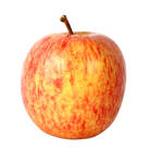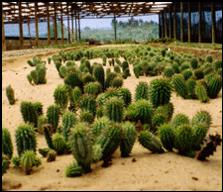What we like more - our fat or our health?
As much as 50 to 75 percent of obesity has genetic influences. Just what those genetic influences are that affect body weight have not been identified. Obese people should be evaluated for medical consequences of their obesity. Motivated persons are encourage to enter medically supervised treatment programs that use a multidisciplinary approach to weight loss. Proper use of these diets requires close monitoring and follow-up. To promote lasting weight loss, lifestyle changes must be made by the dieter while on the fast. Binge eating can be difficult to control because many people turn to food as a way of dealing with their feelings. Keeping a food diary can be beneficial in identifying specifically what feelings are likely to trigger binge eating as well as what types of foods are consumed during a binge. Strategies can then be employed to reduce the urge to binge when the impulse strikes. |
Hoodia help us lose weight
If you haven't heard of Hoodia yet, you soon will because it is being touted as the new miracle supplement for safe, effective weight loss. Hoodia gordonii, (Hoodia) is the botanical name for a cactus like plant that grows in Southern Africa. Scientists have recently isolated several compounds in this amazing plant that are responsible for dramatic weight loss. This all-natural appetite suppressant is also being applauded for containing no dangerous stimulants that caused adverse side effects associated with weight loss products of the last decade. Hoodia gordonii, "Whoo De AH", is the botanical name for a leafless, spiky succulent plant that grows throughout the semi-arid areas of Southern Africa primarily the Kalahari desert. The San (local inhabitants) have rationally used Hoodia stems to stave off hunger and thirst when on long journeys, as it acts as an appetite suppressant. Scientists at the South African Center for Scientific and Industrial Research were the first to successfully prove that Hoodia contains a miracle molecule that suppresses the appetite. Later, a human clinical trial was conducted by scientists in Leicester England. A group of morbidly obese men and women participated. Half the group were given Hoodia and half were given a placebo. At the end of 15 days, the group on Hoodia had reduced their food intake by 1000 calories a day. Given the average daily diet is around 2200 calories, this was a stunning success. After years of careful research, scientists isolated several compounds in this all-natural food that was responsible for dramatic weight loss, P57, which has been widely reported, is but one of several chemical compounds found in the Hoodia succulent. Not only was it proven completely safe, it contains no stimulates that could contribute to the jittery feeling associated with weight loss products of the last decade. Real South African Hoodia is RARE and EXPENSIVE. It takes approximately 5 to 7 years for the Hoodia gordonii succulent to mature and provide appetite suppressant qualities. The African government has limited the amount of Hoodia it exports and the number of suppliers to receive it in the USA. Because of the growing awareness and popularity of this miracle herb, rip-off products that contain very little or no authentic Hoodia in them are beginning to flood the marketplace. In the wild Hoodia takes 5-6 years to mature but is now being cultivated in as little as 2 years commercially in sustainable quantities and has become widely known for its effects as an appetite suppressant. |
Anxiety disorder inside
Both fear and anxiety send signals through the body that prepare all systems for possible danger. Hormones, such as adrenaline and catecholamine, are released in what is known as the "fight or flight" response. The sudden increase in hormone levels speeds up the heart and increases the amount of blood being pumped. At the same time, the muscles tighten, increasing the individual's ability to fight or flee from danger. The intensity of these physiological responses varies according to the seriousness of the event or thought that sparked the emotion, the strength of the individual's fear or anxiety, and his or her previous experience and genetic makeup. Thousands of scientific studies over the past several years show that high blood pressure, ulcers, migraine headaches, strokes, alcoholism, depression, anger, fatigue, drug addiction and many other medical conditions are often due to the long-term effects of stress. Depressed people will seem sad, or "down," or may be unable to enjoy their normal activities. They may have no appetite and lose weight (although some people eat more and gain weight when depressed). They may sleep too much or too little, have difficulty going to sleep, sleep restlessly, or awaken very early in the morning. They may speak of feeling guilty, worthless, or hopeless; they may lack energy or be jumpy and agitated. They may think about killing themselves and may even make a suicide attempt. Some depressed people have delusions (false, fixed ideas) about poverty, sickness, or sinfulness that are related to their depression. Often feelings of depression are worse at a particular time of day, for instance, every morning or every evening. Using brain imaging technologies and neurochemical techniques, scientists are finding that a network of interacting structures is responsible for these emotions. Much research centers on the amygdala, an almond-shaped structure deep within the brain. The amygdala is believed to serve as a communications hub between the parts of the brain that process incoming sensory signals and the parts that interpret them. It can signal that a threat is present, and trigger a fear response or anxiety. It appears that emotional memories stored in the central part of the amygdala may play a role in disorders involving very distinct fears, like phobias, while different parts may be involved in other forms of anxiety. Psychoanalytic theory holds that anxiety stems from unconscious conflict arising from discomfort or distress during childhood. Once the source of the anxiety is identified, it can be eliminated by resolving the underlying conflict. However, most studies find that people with anxiety disorders come from stable homes, with childhood backgrounds similar to those of people without anxiety disorders. |
|
|
Read our other articles:
Sexual disorders solution
Normal hair growth
Learn your skin
Dental bonding
Online medicine buyers need to be prepared
Perimenopause and menopause